Abstract
Salmonella typhimurium appears to divide faster in the spleen of naturally susceptible BALB/c than in resistant (B10 x A/J)F1 mice. S. typhimurium M526 is an LT2 derivative lysogenic for a non-excluding P22 mutant which allows superinfection with a second, non-replicating, P22 phage so that the proportion of superinfected organisms halves at each division. The true in vivo division and death rates can be calculated from successive determinations of the proportion of superinfected organisms and the viable count. It was found that the division time was 2.86 h in BALB/c and 5.02 h in (B10 x A/J)F1; the death rate was low and actually greater in the susceptible BALB/c strain. These results suggest that the gene controlling in vivo salmonella net growth rate, which is very important in natural resistance to salmonella infection, acts very early by regulating the division rate, perhaps inside macrophages. The actual mechanism remains unknown.
Full text
PDF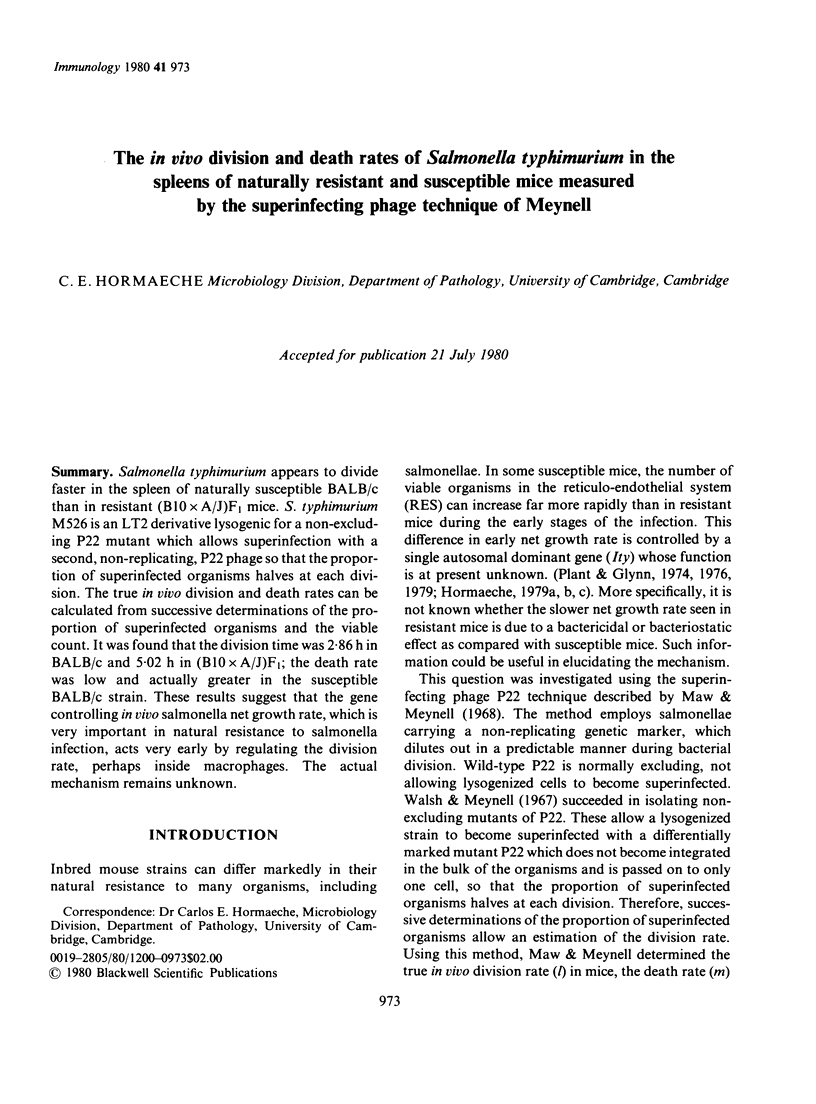
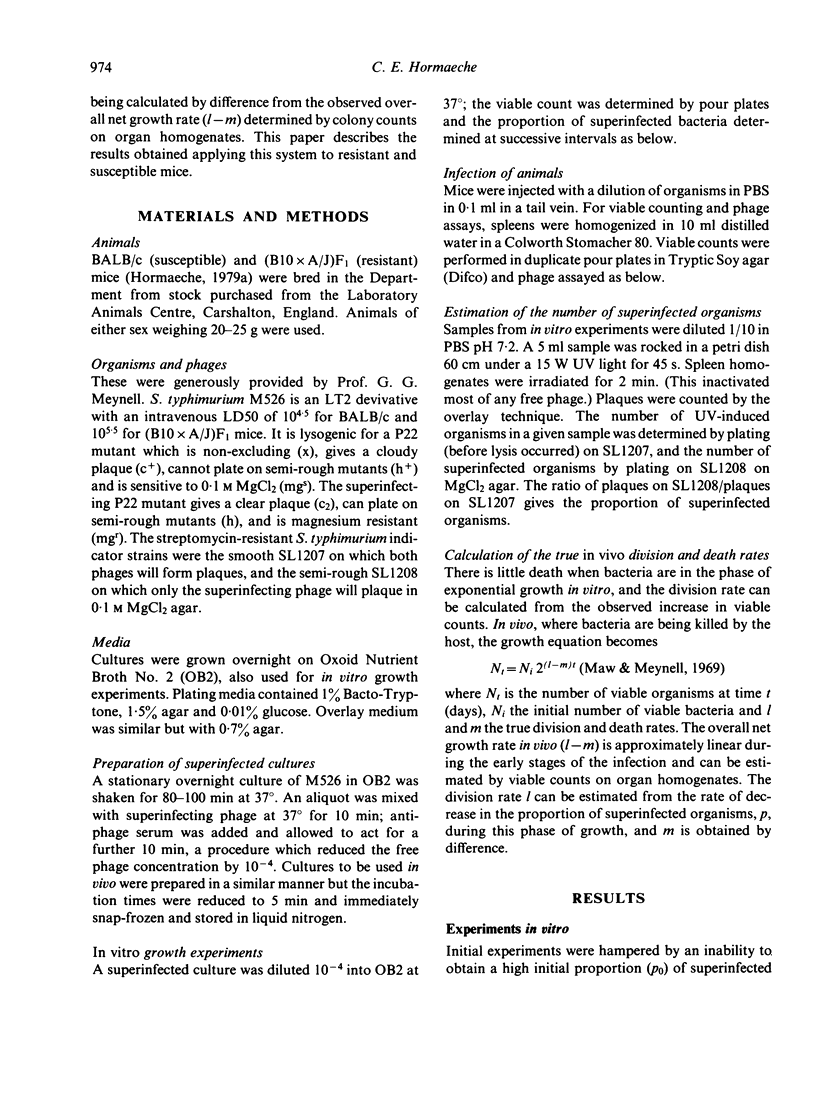
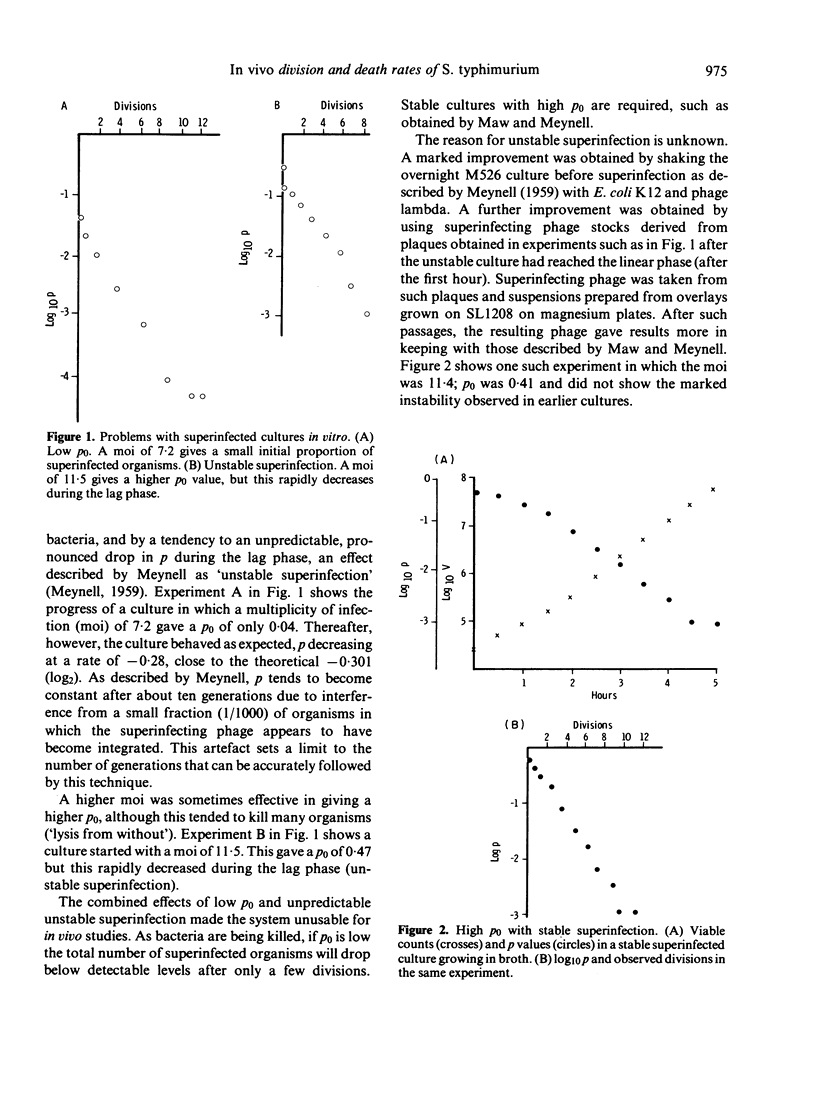
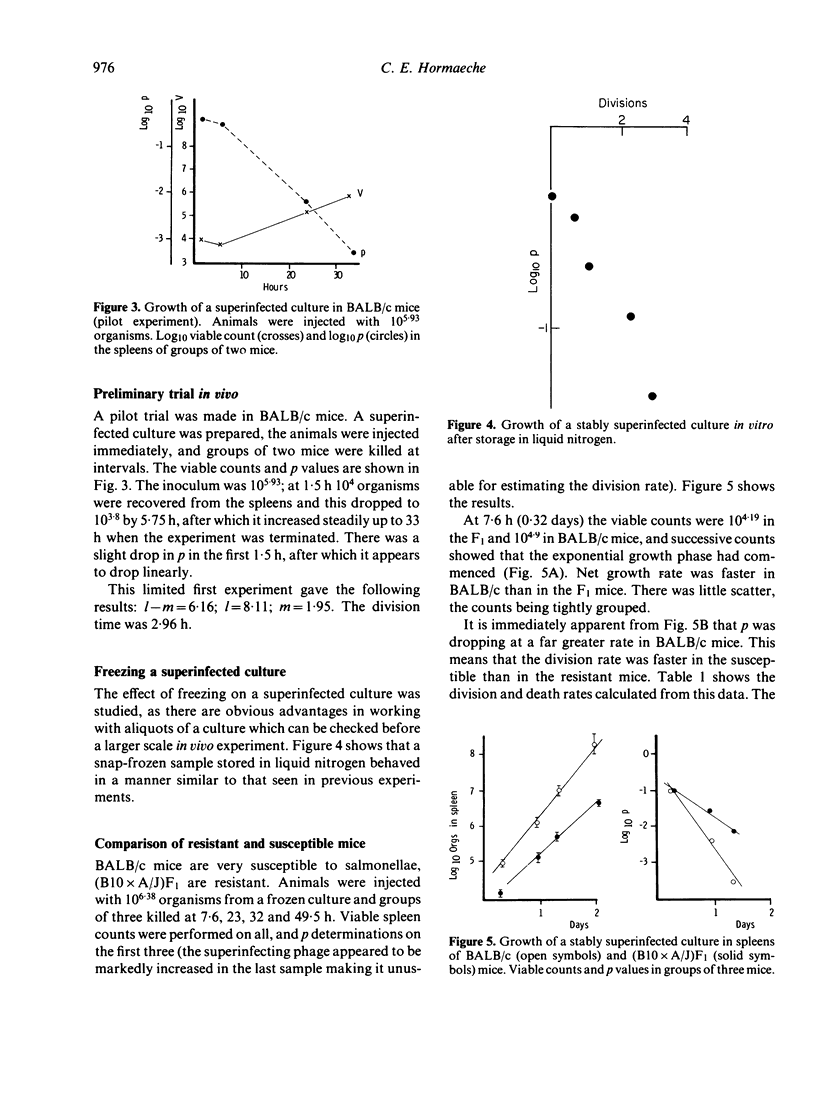
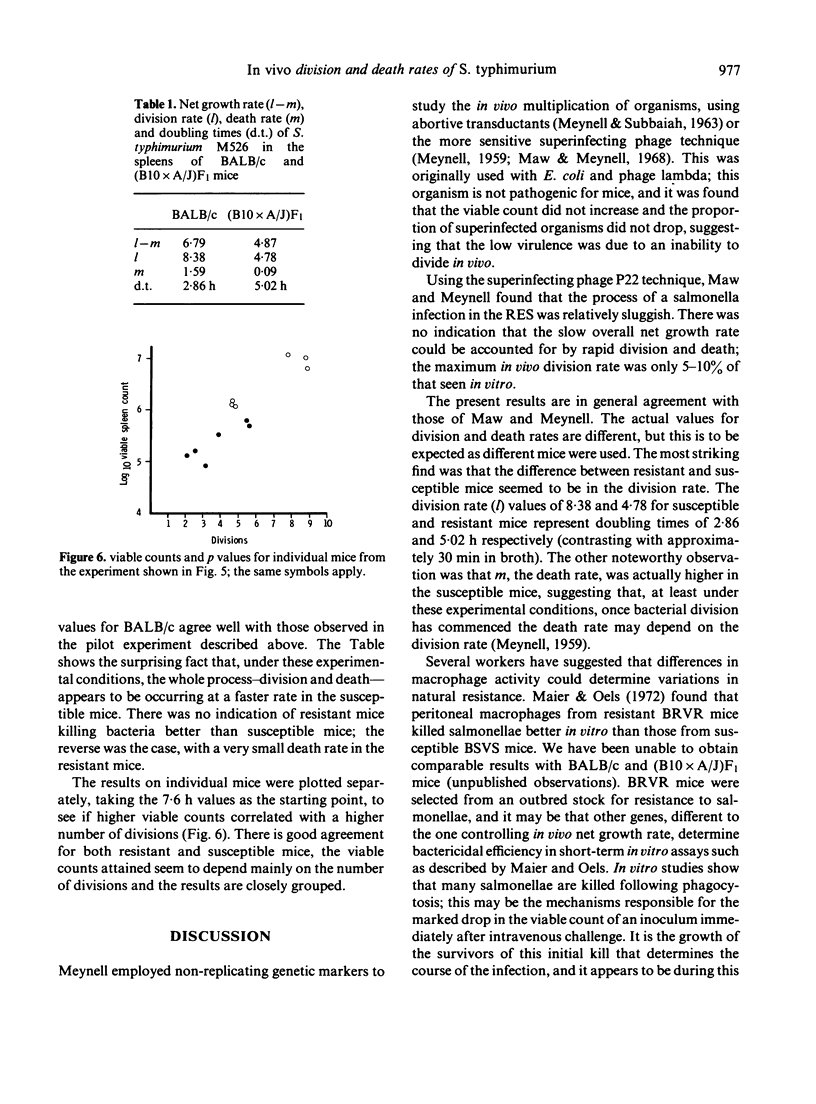
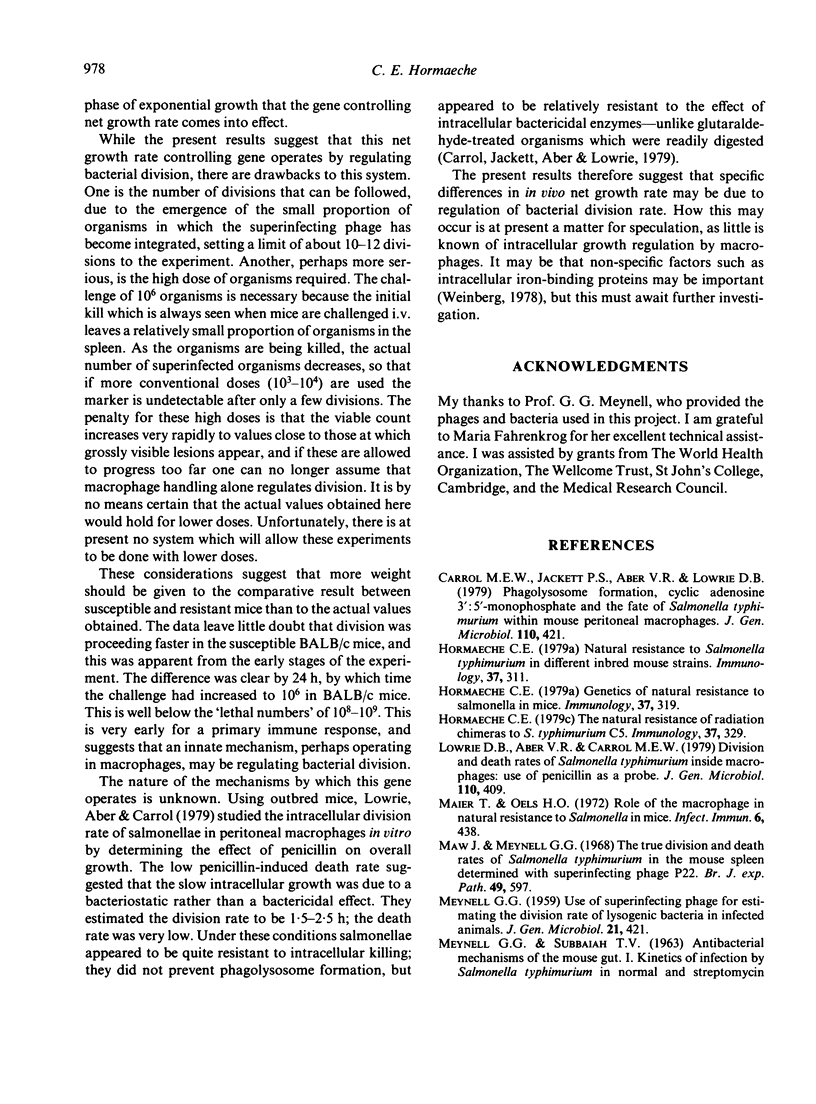
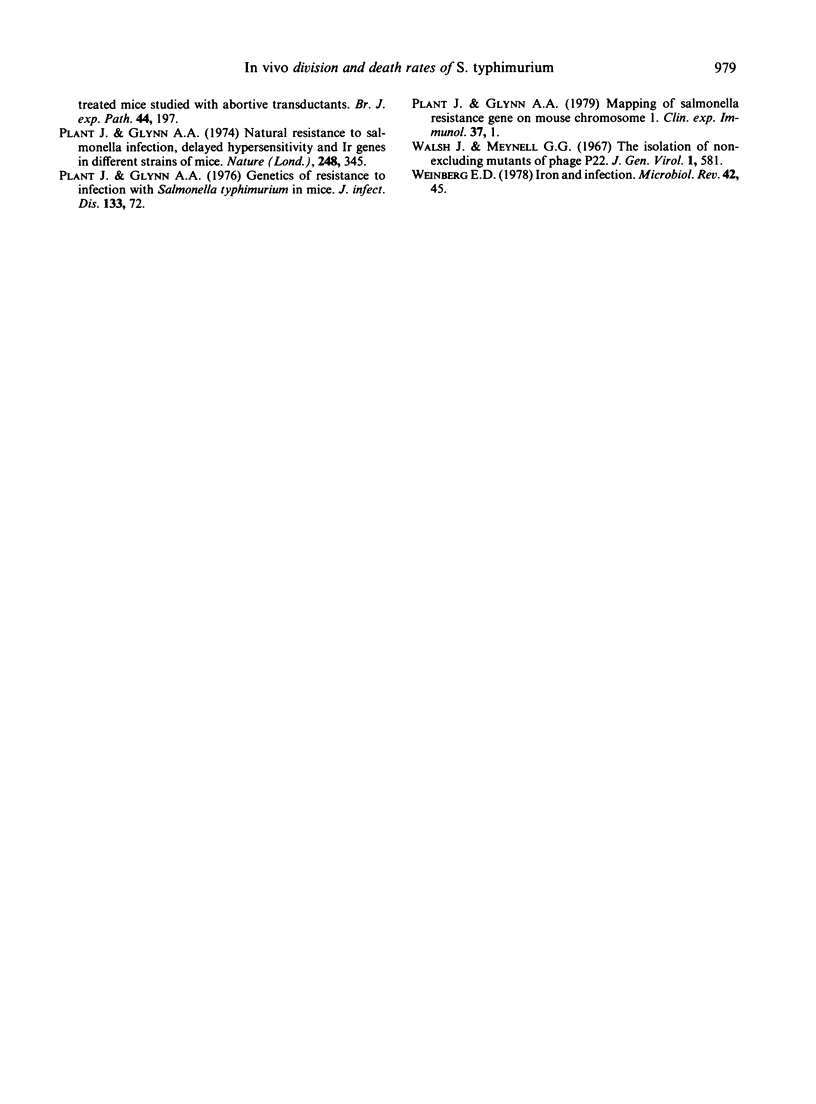
Selected References
These references are in PubMed. This may not be the complete list of references from this article.
- Carrol M. E., Jackett P. S., Aber V. R., Lowrie D. B. Phagolysosome formation, cyclic adenosine 3':5'-monophosphate and the fate of Salmonella typhimurium within mouse peritoneal macrophages. J Gen Microbiol. 1979 Feb;110(2):421–429. doi: 10.1099/00221287-110-2-421. [DOI] [PubMed] [Google Scholar]
- Hormaeche C. E. Genetics of natural resistance to salmonellae in mice. Immunology. 1979 Jun;37(2):319–327. [PMC free article] [PubMed] [Google Scholar]
- Hormaeche C. E. The natural resistance of radiation chimeras to S. typhimurium C5. Immunology. 1979 Jun;37(2):329–332. [PMC free article] [PubMed] [Google Scholar]
- Lowrie D. B., Aber V. R., Carrol M. E. Division and death rates of Salmonella typhimurium inside macrophages: use of penicillin as a probe. J Gen Microbiol. 1979 Feb;110(2):409–419. doi: 10.1099/00221287-110-2-409. [DOI] [PubMed] [Google Scholar]
- MEYNELL G. G., SUBBAIAH T. V. Antibacterial mechanisms of the mouse gut. I. Kinetics of infection by Salmonella typhi-murium in normal and streptomycin-treated mice studied with abortive transductants. Br J Exp Pathol. 1963 Apr;44:197–208. [PMC free article] [PubMed] [Google Scholar]
- Maier T., Oels H. C. Role of the macrophage in natural resistance to salmonellosis in mice. Infect Immun. 1972 Oct;6(4):438–443. doi: 10.1128/iai.6.4.438-443.1972. [DOI] [PMC free article] [PubMed] [Google Scholar]
- Maw J., Meynell G. G. The true division and death rates of Salmonella typhimurium in the mouse spleen determined with superinfecting phage P22. Br J Exp Pathol. 1968 Dec;49(6):597–613. [PMC free article] [PubMed] [Google Scholar]
- Plant J., Glynn A. A. Genetics of resistance to infection with Salmonella typhimurium in mice. J Infect Dis. 1976 Jan;133(1):72–78. doi: 10.1093/infdis/133.1.72. [DOI] [PubMed] [Google Scholar]
- Plant J., Glynn A. A. Locating salmonella resistance gene on mouse chromosome 1. Clin Exp Immunol. 1979 Jul;37(1):1–6. [PMC free article] [PubMed] [Google Scholar]
- Plant J., Glynn A. A. Natural resistance to Salmonella infection, delayed hypersensitivity and Ir genes in different strains of mice. Nature. 1974 Mar 22;248(446):345–347. doi: 10.1038/248345a0. [DOI] [PubMed] [Google Scholar]
- Walsh J., Meynell G. G. The isolation of non-excluding mutants of phage P22. J Gen Virol. 1967 Oct;1(4):581–582. doi: 10.1099/0022-1317-1-4-581. [DOI] [PubMed] [Google Scholar]
- Weinberg E. D. Iron and infection. Microbiol Rev. 1978 Mar;42(1):45–66. doi: 10.1128/mr.42.1.45-66.1978. [DOI] [PMC free article] [PubMed] [Google Scholar]


